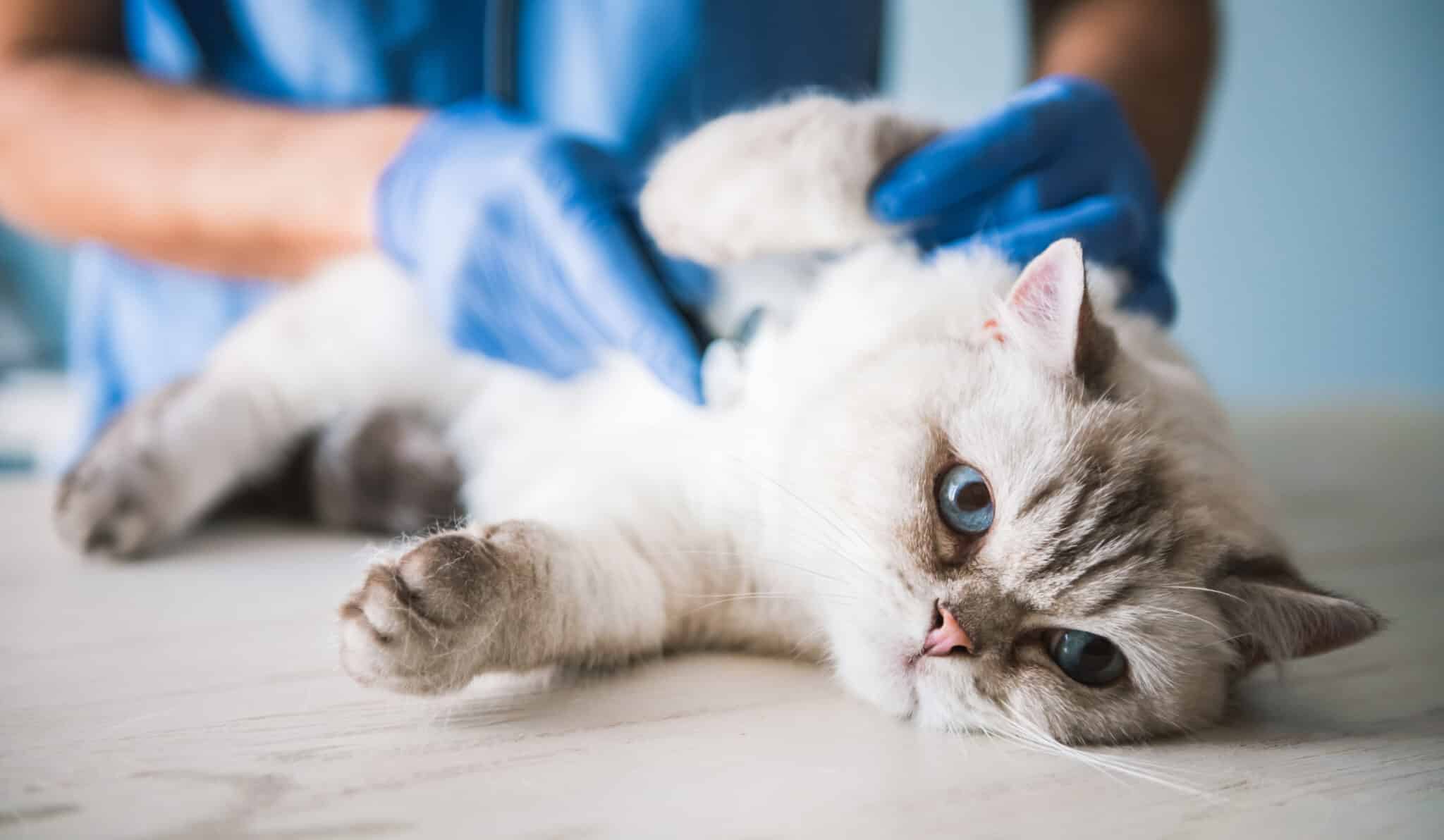Compare Pet Insurance Companies that Cover Hip Dysplasia
Use the table below to compare our top recommended pet insurance companies that cover hip dysplasia:
| Company | Monthly Cost | Star Rating | Accident Waiting Period | BBB Rating | Visit Site |
|---|---|---|---|---|---|
| $34-$75 |
4.5
|
14 days | A- | EXPLORE PLANS | |
| $39-$73 |
4.7
|
48 hours | A+ | EXPLORE PLANS | |
| $45-$90 |
4.3
|
15 days | A+ | EXPLORE PLANS | |
| $24-$54 |
4.0
|
15 days | A+ | EXPLORE PLANS | |
| $18-$44 |
4.8
|
14 days | N/R | EXPLORE PLANS | |
| $28-$59 |
4.8
|
3 days | A+ | EXPLORE PLANS | |
| $53-$123 |
4.2
|
48 hours | A+ | EXPLORE PLANS |
| Company | BBB Rating | Monthly Cost | Star Rating | Accident Waiting Period | Visit Site |
|---|---|---|---|---|---|
| A- | $34-$75 |
4.5
|
14 days | EXPLORE PLANS | |
| A+ | $39-$73 |
4.7
|
48 hours | EXPLORE PLANS | |
| A+ | $45-$90 |
4.3
|
15 days | EXPLORE PLANS | |
| A+ | $24-$54 |
4.0
|
15 days | EXPLORE PLANS | |
| N/R | $18-$44 |
4.8
|
14 days | EXPLORE PLANS | |
| A+ | $28-$59 |
4.8
|
3 days | EXPLORE PLANS | |
| A+ | $53-$123 |
4.2
|
48 hours | EXPLORE PLANS |
Why Trust Us?
Here’s a breakdown of how we reviewed and rated the best pet insurance companiesIs Hip Dysplasia Covered Under Pet Insurance?
Most pet insurance companies cover hip dysplasia, but only under certain conditions. Most importantly, there must not be any signs or symptoms before your policy’s effective date or during the waiting period.
Many providers have a special waiting period for orthopedic conditions, including hip dysplasia, typically six to 12 months. Additionally, there’s often a bilateral condition exclusion, which means that if your pet shows symptoms in one hip before or during the waiting period, dysplasia in the other hip isn’t covered either.
Top Pet Insurance Companies That Cover Hip Dysplasia
Based on our rigorous research, these are the best pet insurance companies for animals with hip dysplasia.
- Spot: Most Customizable Coverage
- Embrace: Our Pick for Savings
- Fetch: Our Pick for Comprehensive Coverage
- Healthy Paws: Most Affordable Unlimited Coverage
- ASPCA: Our Pick for Older Pets
- Pets Best: Our Pick for Vet Direct Pay
- Trupanion: Our Pick for Unlimited Lifetime Payouts
Why We Picked Spot
- Deductibles: $100-$500
- Annual coverage limits: $5k-$100k
- Reimbursement rates: 70%-90%
Spot earns our top spot because it has one of the shortest waiting periods for hip dysplasia: only 14 days, the same as any other illness. The company also has more customizable coverage than competitors, including annual limit options between $2,500 and unlimited.
To learn more: Spot Pet Insurance review
Pros & Cons
Spot Coverage Details
Spot covers hip dysplasia under its accident-and-illness plan. You can add one of its wellness plans for preventive care.
- Hip dysplasia requirements: 14-day waiting period
- Coverage options: Accident-only, accident-and-illness, Gold and Platinum wellness plans
- What’s not covered: Preexisting conditions, organ transplants, health supplements, prescription food
Why We Picked Embrace
- Deductibles: $100-$500
- Annual coverage limits: $5k-$100k
- Reimbursement rates: 70%-90%
Embrace covers hereditary conditions such as hip dysplasia with no per-incident coverage caps. Although there’s a six-month waiting period for orthopedic conditions, this can be reduced to as little as 14 days if you fill out a form and take your pet for an orthopedic exam. Embrace also offers multiple discounts and a Healthy Pet Deductible benefit, which credits pet owners $50 toward their co-pay each year they don’t file a claim.
To learn more: Embrace Pet Insurance review
Pros & Cons
Embrace Coverage Details
Embrace covers hip dysplasia in its standard accident-and-illness plan. You can get wellness coverage by opting for its wellness add-on.
- Hip dysplasia requirements: Six-month waiting period reducible to 14 days with exam and waiver
- Coverage options: Accident-and-illness plan, add-on for preventive care
- What’s not covered: Preexisting conditions, organ transplants, some alternative treatments, supplements, prescription food
Why We Picked Fetch
- Deductibles: $100-$500
- Annual coverage limits: $5k-$100k
- Reimbursement rates: 70%-90%
Formerly PetPlan, Fetch by Dodo covers hip dysplasia after a six-month waiting period. It doesn’t limit payouts by condition or lifetime, which will prove valuable for something like total hip replacement surgery. It also offers robust holistic care such as acupuncture, homeotherapy and stem-cell therapy.
To learn more: Fetch Pet Insurance review
Pros & Cons
Fetch Coverage Details
Fetch Coverage Details
Fetch covers hip dysplasia under its standard accident-and-illness plan. It doesn’t offer add-ons for preventive care.
- Hip dysplasia requirements: Six-month waiting period
- Coverage options: Accident-and-illness plan
- What’s not covered: Preexisting conditions, routine veterinary care, preventive care or medication, prescription food
Why We Picked Healthy Paws
- Deductibles: $100-$500
- Annual coverage limits: $5k-$100k
- Reimbursement rates: 70%-90%
You must enroll your pet by age 6 to qualify for hip dysplasia coverage from Healthy Paws. The company’s selling point is its unlimited annual and lifetime coverage caps. These ensure you won’t have to worry about exceeding your maximum limit when treating a condition like hip dysplasia, which sometimes requires costly surgery.
To learn more: Healthy Paws Pet Insurance review
Pros & Cons
Healthy Paws Coverage Details
Healthy Paws covers hip dysplasia in its standard accident-and-illness plan. It doesn’t offer add-ons for preventive care.
- Hip dysplasia requirements: 12-month waiting period, enrolled before age 6
- Coverage options: Accident-and-illness plan
- What’s not covered: Preexisting conditions, exam fees, behavioral care, spaying/neutering
Why We Picked ASPCA Pet Health Insurance
- Deductibles: $100-$500
- Annual coverage limits: $5k-$100k
- Reimbursement rates: 70%-90%
ASPCA Pet Health Insurance is a seasoned provider with more than 15 years of experience. Though the company is a little unclear about its coverage policy for hip dysplasia, the condition doesn’t appear to be subject to any exclusions apart from a 14-day waiting period.
To learn more: ASPCA Pet Health Insurance review
Pros & Cons
ASPCA Pet Health Insurance Coverage Details
ASPCA Pet Health Insurance covers hip dysplasia in its accident-and-illness plan. It also offers two wellness add-ons with different coverage levels and annual limits.
- Hip dysplasia requirements: 14-day waiting period
- Coverage options: Accident-only plan, accident-and-illness plan, wellness add-ons
- What’s not covered: Preexisting conditions, boarding
Why We Picked Pets Best
- Deductibles: $100-$500
- Annual coverage limits: $5k-$100k
- Reimbursement rates: 70%-90%
Pets Best insures pets of all ages, but it stands out for its coverage of older pets. Unlike competitors, it has no age limit and allows you to enroll your pet anytime. It offers excellent hip dysplasia coverage starting after 14 days and covers wheelchairs prescribed by a vet, which some pets will need when suffering from the condition.
Pros & Cons
Pets Best Coverage Details
Pets Best covers hip dysplasia in its accident-and-illness plan. It also offers two wellness add-ons for preventive care.
- Hip dysplasia requirements: 14-day waiting period
- Coverage options: Accident only, accident-and-illness plan, two routine care add-ons
- What’s not covered: Preexisting conditions, parasites, food and supplements, herbal and holistic treatments
Why We Picked Trupanion
- Deductibles: $100-$500
- Annual coverage limits: $5k-$100k
- Reimbursement rates: 70%-90%
Trupanion’s waiting period for hip dysplasia is also relatively low at 30 days. There’s no upper age limit or bilateral exclusions, which is rare. Trupanion further stands out for its flexible deductible, allowing pet owners to choose a rate between $0 and $1,000. Its deductibles are per condition, not annual, and are paid for the lifetime of your pet once reached.
To learn more: Trupanion review
Pros & Cons
Trupanion Coverage Details
Trupanion covers hip dysplasia under its standard accident-and-illness plan. You can add its Recovery and Complementary Care package to get coverage for healing treatments such as acupuncture, chiropractic adjustments, hydrotherapy and rehabilitative therapy.
- Hip dysplasia requirements: 30-day waiting period
- Coverage options: Accident-and-illness plan; add-ons for recovery and complementary care, pet owner assistance and breeding
- What’s not covered: Preexisting conditions, wellness care, spaying/neutering, processing fees
Is Pet Insurance for Hip Dysplasia Worth It?
Pet insurance for hip dysplasia is only worth it if you enroll your pet before it shows signs of the condition. Otherwise, hip dysplasia will be considered a preexisting condition, and you won’t be reimbursed for related costs. Enrolling your pet while it’s still healthy could save you thousands of dollars since hip dysplasia treatments are generally expensive. Most treatments require surgical procedures such as triple pelvic osteotomy and femoral head osteotomy, which can cost $6,000 or more.
Does Hip Dysplasia Have Any Waiting Periods?
There is always a waiting period for hip dysplasia, as there is for all illnesses and conditions. However, many pet insurance policies have much longer waiting periods for hip dysplasia and cruciate ligament problems than for other illnesses and conditions.
Is Hip Dysplasia Covered as a Preexisting Condition?
Preexisting conditions are never covered by pet insurance. If the condition shows up during the waiting period on your policy, it’s considered preexisting.
Should I Buy Pet Insurance for a Pet with Hip Dysplasia?
If your pet is already showing signs of hip dysplasia, you won’t receive coverage for the condition. However, pet insurance will still cover expenses for accidents or unrelated illnesses. So if your pet is still young and healthy but prone to hip dysplasia, it’s worth buying pet insurance now to know it will be covered later. You could save thousands of dollars.
Other Pet Insurance Resources
- Best Pet Insurance
- Cheap Pet Insurance
- Best Pet Insurance For Preexisting Conditions
- How Much Does Pet Insurance Cost?
Frequently Asked Questions About Hip Dysplasia
Here are some symptoms of hip dysplasia your dog may exhibit.
- Limping
- Reluctance to stand up or climb stairs
- Weakness or pain in the hind legs
- Wobbly gait
You can get pet insurance if your dog already has hip dysplasia, but costs related to the condition won’t be covered. If your pet’s breed is prone to hip dysplasia, it’s best to enroll it while it’s still healthy to ensure hip dysplasia costs will be covered later.
If you don’t have pet insurance before your pet develops hip dysplasia, you’ll be responsible for all vet bills associated with treatment, including exam fees, X-rays, hospitalization, medication and possibly surgery.
According to the Washington state vet clinic Tumwater, surgery to correct hip dysplasia costs an average of $3,500 to $7,000 per hip. The total cost depends on your pet’s health, age and size.
Methodology: Our System for Rating Pet Insurance Companies
We review each pet insurance company based on factors most important to pet parents like you. To inform our reviews, we surveyed 1,000 dog and cat owners nationwide to determine the most important elements of pet insurance coverage. Our process includes in-depth industry research about each provider, such as comparing coverage options, gathering quotes online to determine pricing and reading reviews to assess customer service.
We then score each provider on a 100-point scale and divide the final score by 20 to calculate an overall rating out of 5.0 stars. Here are more details about the factors we consider when reviewing pet insurance providers:
- Monthly pricing (25%): To assess pricing, we collect sample quotes for medium-mixed breed and purebred dogs and cats, ranging from four years old to one year old. Providers earn the most points in this category for offering affordable coverage and a multi-pet discount.
- Plans (15%): The best pet insurance companies offer a range of plans to give customers the option to choose the coverage that is best for their pet. Companies offering accident and illness plans, accident-only plans, and wellness or preventive care add-ons earn full points in this category. We also look at coverage limits and award the most points for policies with unlimited coverage.
- Covered treatments (15%): According to our survey of pet owners, coverage is one of the most important factors when shopping for pet insurance. Companies with a breadth of included treatments and unique coverages receive more points in this category than providers with more standard or general policies.
- Customization options (10%): Customizing your pet insurance policy can help lower your cost. Providers that offer more annual limit, deductible and reimbursement rate options earn the highest scores in this category.
- Customer care (10%): Respondents to our survey also valued customer service when comparing pet insurance providers. We score each company based on its website accessibility and overall usability, customer service availability, mobile apps, money-back guarantees and veterinarian telehealth options, awarding points to insurers with more customer experience offerings.
- Industry reputation (10%): We review up-to-date ratings and accreditation information from the Better Business Bureau (BBB) and score companies based on years of industry experience and state availability.
- Waiting periods (10%): Companies with shorter accident, illness and orthopedic waiting periods between the time you sign up for coverage and your policy starts score higher in this category.
- Eligible age (5%): Some companies do not offer policies for pets over a certain age. For this category, we deduct points from providers that have age limits for covered pets.
We use our rating system to compare each company we review and determine the best pet insurance companies in the industry. To learn more, read our full pet insurance methodology for reviewing and scoring providers.
Bradford Cuthrell is a meticulous researcher and writer specializing in pet and home finance topics. He’s surveyed thousands of pet owners and homeowners, listened to hundreds of customer service calls from various home service companies and spoken with dozens of industry experts to understand homeowners’ common pain points and needs.
Dana Getz is a seasoned editor with nearly a decade of experience writing and editing content. She has a background in journalism and worked as a fact-checker for prestigious magazines such as New York and Chicago. She holds a journalism and marketing degree from Northwestern University and has worked across numerous categories within the home services space.
























